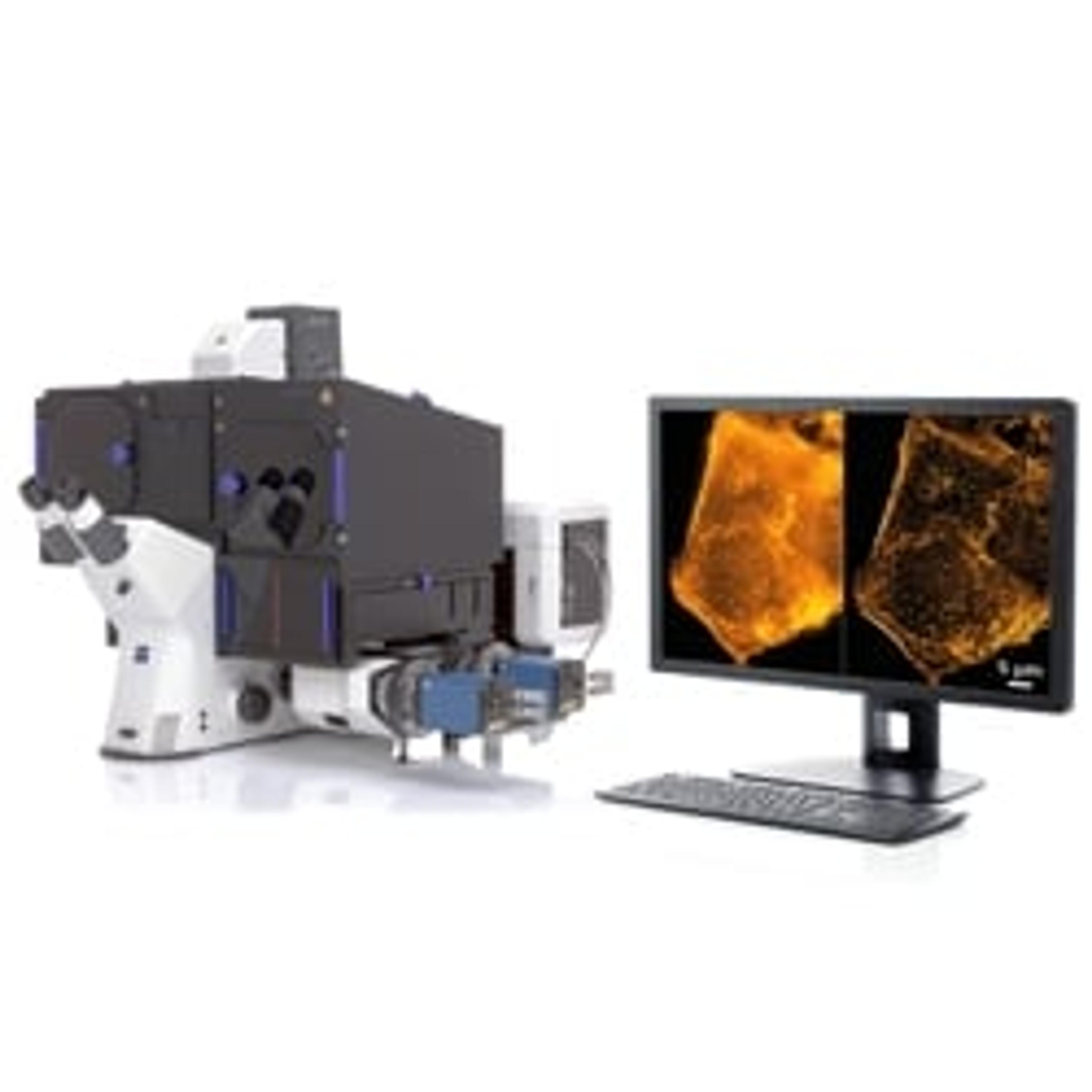Super 3D Resolution Allows for Observation of Fast Cellular Processes in High Quality
8 Mar 2019ZEISS has introduced the ZEISS Elyra 7 with Lattice SIM, a new flexible platform for fast and gentle 3D superresolution. Lattice SIM expands the possibilities of structured illumination microscopy (SIM): illuminating the sample with a lattice pattern rather than grid lines gives higher contrast and allows a more robust image reconstruction. Scientists can use 2x higher sampling efficiency to lower the illumination dosage to observe fast cellular processes in superresolution. High image quality is maintained even at high frame rates.
Lattice SIM enables fast imaging of 3D volumes with up to 120 nm laterally. Thanks to greater light efficiency, the new Lattice SIM technology provides scientists with gentle superresolution imaging of living specimens with 255 frames per second. Using less light to illuminate the specimen means scientists can image longer with less bleaching of the sample. The novel Lattice SIM technology allows new mechanistic details to be uncovered and the finest subcellular structures in large fields of view to be quantified.
ZEISS Elyra 7 can be expanded with single molecule localization microscopy (SMLM) for techniques such as PALM, dSTORM, and PAINT. ZEISS Elyra 7's SMLM module delivers molecular resolution in large 3D volumes and powerful post-processing algorithms for quantification. Researchers choose freely among labels when imaging with resolutions down to 20 nm laterally. SMLM provides access to molecular mechanisms in both fixed and living specimens. Researchers can count molecules and come to understand, molecule-by-molecule, how individual proteins are arranged within a structural context.
ZEISS Elyra 7 is highly flexible: users profit from the wealth of options of a research grade, live cell microscope from ZEISS. They can expand their ZEISS Elyra 7 with various contrasting techniques and combine them with optical sectioning. The new Apotome mode allows fast optical sectioning of 3D samples. ZEISS Elyra 7 also works seamlessly with ZEISS SEMs in a correlative workflow.
Life sciences research often requires you to measure, quantify, and understand the finest details and sub-cellular structures of the sample. Scientists may be working with tissue, bacteria, organoids, neurons, living or fixed cells and many different labels. ZEISS Elyra 7 takes them beyond the diffraction limit of conventional microscopy to image samples with superresolution. Researchers now examine the fastest processes in living samples – in large fields of view, in 3D, over long time periods, and with multiple colors.

